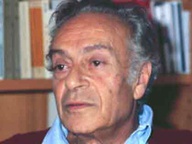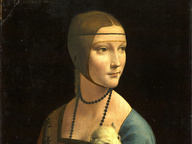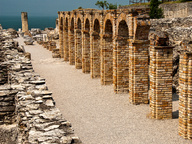The hidden Treasures. Tino di Camaino, Caravaggio, Gemito
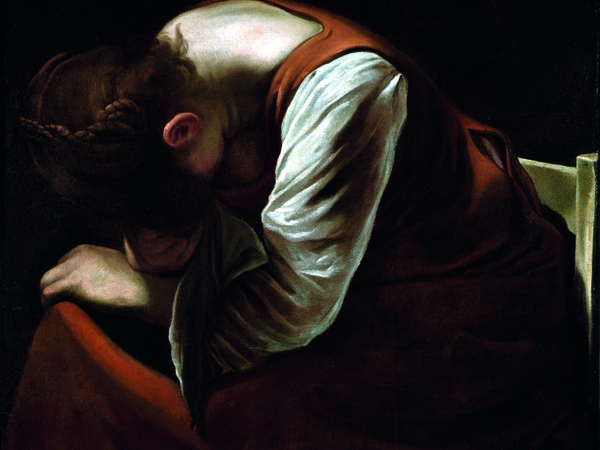
Caravaggio, Maddalena Addolorata, 1605-1606
From 06 Dicembre 2016 to 28 Maggio 2017
Naples
Place: Basilica di Santa Maria Maggiore alla Pietrasanta
Address: piazzetta Pietrasanta 17-18
Times: Mon-Fri 10am-08pm; Sat-Sun 10am-11pm (from march till 12am)
Responsibles: Vittorio Sgarbi
Organizers:
- Ticket24 (Gruppo ilSole24ore)
- Contemplazioni
- Fenice Company Ideas
- Pietrasanta Polo culturale
- Radicinnoviamoci
- Con il patrocinio di Arcidiocesi di Napoli
- Regione Campania
- Comune di Napoli
- Città Metropolitana di Napoli
Ticket price: full € 12, reduced € 10
Telefono per informazioni: +39 081 19230565
Official site: http://www.itesorinascosti.it
“The search for paintings doesn’t have rules, nor goals, nor landing place, it’s unpredictable. You don’t find what you are looking for, you look for what you find. Sometimes way beyond one’s wishes or expectations”. This is the way Vittorio Sgarbi describes the mystery of collecting: “the attractiveness for what is not there”. This is the idea that lead to the creation of the great exhibition “The Hidden Treasure. Tino di Camaino, Caravaggio, Gemito” that starting from 6th December 2016 will reach the prestigious museum halls of Santa Maria Maggiore alla Pietrasanta church, in Piazzetta Pietrasanta 17-18 (Via dei Tribunali) in Naples. The exhibition shows the development of Italian art from the Middle Ages to the 20th Century.
The aim of the new great Neapolitan exhibition is to narrate the Italian art history from the Middle Ages to the Twentieth Century.
In a time frame of more than seven centuries, the exhibitions will show the evolution of styles, trends, and the turning points of Italian art history through a selection of more than a hundred art works among paintings and sculptures, which belong to bank foundations, institutions and private collectors, with the purpose to give value, as the title itself suggests, to a “hidden” artistic heritage, which is not displayed in public museums. The aim is at the same time to create an interesting research about the unique and complex Italian “artistic geography”.
As for the successful exposition in Salò, the new edition of the exhibition is the natural development of another extraordinary exhibition, “Italy’s Treasure”, which took place during the Universal Exposition hosted by Milano in 2015. This exhibition highlighted the genetic variety, from Piedmont to Sicily, of great masterpieces conceived by people’s minds, moods, emotions that refer to the places, the soils, the waters, the winds which produced them. After all, Italy is the land of accomplished happiness: every foreigner, from Stendhal to Bernard Berenson, who elected our country as his own homeland, was totally aware of that and he could not imagine a more heavenly place.
The greatness of Italian art is indeed an intricate and complex pattern deeply-rooted in a territory which has no equals in the whole world and where great masterpieces and minor contexts shed light one on the other. This is the principle that Roberto Longhi adopted when he started his new interpretation, with no hierarchy nor leaders, of Emilian art, analyzing the area that he called “Padanìa” and recognizing in 1934 the distinctive characteristics of the “Officina ferrarese” (the workshop in Ferrara’s area) and of the paintings in Bologna’s area. From that moment on, the prejudice about the first place of Tuscan art, preeminent starting from Giorgio Vasari’s writings, was set aside and the peculiar features of each territory had finally been recognized.
The idea of Italy as one single country, geographically and politically, was built thanks to the language and the Italian style, which were always connected. Italian language, the so-called “volgare”, started to emerge during the 12th Century and becomes the language of literature for the first time in the Sicilian poetry, precisely in the literary context promoted by Federico II at his royal court. After that, the language was used by the “Stilnovo” poetry in Tuscany and finally by Dante, Petrarca and Boccaccio.
During the Renaissance in 1525 Pietro Bembo writes the “Prose della volgar lingua” where he codifies the language of literature on the basis of Petrarca’s poetry and Boccaccio’s prose; according to him, these two Tuscan writers are the models for Italian literature. Five years before that, in 1520, Raffaello died and the Renaissance touched its highest point thanks to his works. During the 16th Century Italy becomes a country beyond territorial divisions and local dialects, and the first main characters of this unification are not only writers but also artists such as Giotto and Michelangelo, painters and sculptors who speak Italian.
The Renaissance defines a united Italy before the “Risorgimento”. However, in this process what is built following one same perspective doesn’t cancel the differences, which keep revealing themselves throughout different interpretations. And after the long unification process, in which the model followed was the Tuscan language and Tuscan art, research on the formal and expressive peculiarities of each territory’s art could start.
The new Neapolitan exhibition will give a sample of this Italian “artistic geography” with all its distinctive characteristics. The visitors will be offered a wide overview of the artists’ main subjects, from the holy images to the mythological and allegorical ones, from the portraits to the landscapes up to still life.
SCARICA IL COMUNICATO IN PDF
COMMENTI

-
 Dal 20 dicembre 2024 al 04 maggio 2025
Fermo | Palazzo dei Priori
Dal 20 dicembre 2024 al 04 maggio 2025
Fermo | Palazzo dei Priori
-
 Dal 20 dicembre 2024 al 04 maggio 2024
Gorizia | Palazzo Attems Petzenstein
Dal 20 dicembre 2024 al 04 maggio 2024
Gorizia | Palazzo Attems Petzenstein
-
 Dal 18 dicembre 2024 al 18 dicembre 2024
Venezia | Museo Correr
Dal 18 dicembre 2024 al 18 dicembre 2024
Venezia | Museo Correr
-
 Dal 14 dicembre 2024 al 02 marzo 2025
Palermo | Palazzo Abatellis
Dal 14 dicembre 2024 al 02 marzo 2025
Palermo | Palazzo Abatellis
-
 Dal 12 dicembre 2024 al 23 febbraio 2025
Roma | Palazzo Altemps
Dal 12 dicembre 2024 al 23 febbraio 2025
Roma | Palazzo Altemps
-
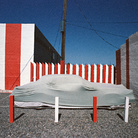 Dal 13 dicembre 2024 al 31 agosto 2025
Roma | Museo dell'Ara Pacis
Dal 13 dicembre 2024 al 31 agosto 2025
Roma | Museo dell'Ara Pacis
